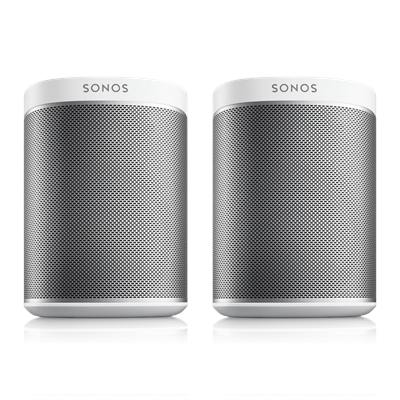2015 Tax Newsletter
2015 CRA Updates
Due to the timing of parliament changes, 2015 mainly saw changes that were announced last year, primarily benefiting Parents:
- Family Tax Credit – A benefit of up to $2,000 for families that have kids under 18 and for parents who have different levels in income
- UCCB (Universal Childcare Benefits) are being increased for children under 6 (+$720 additional) and is now expanded to include kids 17 and under.
- Children’s fitness tax credits are increased to $1,000 (prev. $500)
- Child Care Expense Deduction has been increased by an additional $1,000
2016 Proposed Updates
Many changes, only to take effect for the 2016 tax year, are expected in the Federal Budget release, expected mid-late March 2016. Some anticipated changes include:
- Middle Class Tax-Cut – A reduction of tax rates by 1.5% for those earning between $45k-$200k annual income.
- New High-Income Tax Bracket – A new tax bracket will be introduced for individuals with over $200k annual income.
- Family Tax Cut – The Family Tax Cut introduced in 2014 is being eliminated
- TFSA reduction – The 2016 Annual TFSA contribution limit will likely decrease to $5,500.
All above changes and others are pending, based on the budget release.
As always, your kind words and referrals are the greatest compliment you can give me. For the 2015 tax year (ending April 30, 2016) I will be giving out the following gifts to thank those of you who have been integral to dwm’s growth! Gifts include a pair of Sonos Speakers, Edible Arrangements & Vintage Wine/Craft Beers.



See link for details: https://dwmaccounting.ca/2015-referrals/
In an effort to reduce unnecessary waste, dwm clients will be receiving their completed 2015 tax package in electronic pdf format instead of paper copies.
With advancements in online security and cloud/digital storage even the CRA is in the process of transitioning to online tax notifications. Starting this year, you can request to receive your Notice of Assessments from the CRA via e-mail (The future is finally here!). Taking advantage of electronic tax packages will benefit us all by creating less waste, requiring less storage space and, when stored correctly, less chance of information going missing or being misplaced.
dwm invoices, T1/T2 tax packages, HST submission packages and in some cases sign-off forms will all be handled electronically going forward.
If you still wish to receive a formal paper copy, simply ask and one will be ready for you at the sign-off meeting!
Which one is better to use and when?
It depends. I’m often asked this by clients and the correct answer depends on a number of factors including: current income level, estimated future income level, short & long-term financial goals/plans, business growth plans and ability to utilize the Home Buyer’s Plan(HBP). Clearly, not a straightforward answer, but there are two questions I always ask to help determine the right answer for each individual’s unique situation:
– Are you expecting your income to increase in the future?
RRSP Contributions decrease your taxable income. This means if you earn $95k and contribute $5k, you only pay taxes as if you earned $90k during the year. This is a great way to avoid jumping up a tax bracket. It also means your RRSP tax savings vary depending on your tax rate – the higher your current tax bracket/rate, the more benefit you would see from an RRSP contribution. I often help clients contribute just enough to keep below a certain tax bracket – but on the same line of thought: if you expect your income to increase in future years, you may be better off saving your RRSP contribution room for then.
– Will you be in need of cash in the near future?
Generally speaking, anything you contribute to your RRSP you should not plan to see again until retirement (hence the name ‘Registered Retirement Savings Plan’). Say you need a large amount of cash to fund a new business venture in the near future – you shouldn’t contribute to your RRSP as you won’t be able to get this money back when you need it without taking a hefty tax hit. You could instead invest in your TFSA, which allows you to deposit and withdraw at any time without tax consequences. The exception to this may be if you plan on buying your first home, as you can withdraw up to $25k from your RRSP for the downpayment. You’ll be required to re-contribute this amount over the next 15 years to your RRSP without tax benefits, which may or not may be beneficial for you – so using the HBP (and contributing to your RRSP for this purpose) is not a given for everyone’s situation.
As a general rule of thumb, for clients who are early in their career (i.e. expectation for income to increase down the road, getting ready to buy a new home, potential business investments in the near future), I recommend utilizing your TFSA as a savings tool. Amounts put into your TFSA do not lower your taxes, but the investments inside this account are not taxed, which is a great way to earn passive income tax-free. You also have the freedom to withdraw amounts from the TFSA whenever you like, providing a great amount of flexibility for when you may need a large sum of money. If you have never used a TFSA, as of 2016, the total contribution limit is $46,500.
Again, the above advice varies from situation to situation and sometimes a combination of the two is ideal. You are always encouraged to obtain advice from a professional accountant when planning out how to utilize either of these two savings tools.
Have you registered to access your CRA information online yet?
Having online access allows you to check up on your tax return status and retrieve electronic copies of any correspondence with the CRA. Even better, add dwm Accounting as a Representative, and I will be able to easily access, review and submit documents to make your taxes as stress-free as possible!
To register for CRA Online Access, visit:
http://www.cra-arc.gc.ca/MyBusinessAccount (if you have a 9-digit CRA Business#) or
http://www.cra-arc.gc.ca/myaccount/ If you do not have a registered business #
You will be asked to verify data from your previous tax return while registering. Once completed, you will be sent an access code via mail. You will not be able to finalize registration until receiving this code in the mail.
To add dwm Accounting as an account representative:
Once registered, log in.
On the left hand column, click the link “Representatives”
Select “Authorize a Representative”
Input the business number: 83772 5993
Complete the process & let me know to confirm on my end.
